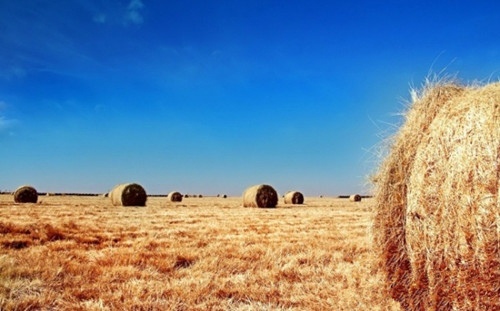
英文导游用语结构和内容分析
浅谈英文导游用语的基本特点——英文导游用语结构和内容分析【论文摘要】本论文主要基于英文导游词的基本特点,通过对英文导游词用语的结构和内容两方面的具体分析来论述英文导游用语的特点。
首先对英文导游词进行基本概述;其次,通过对英文导游用语四部分结构的分析,说明导游用语在结构上的基本特点;再次,通过具体五方面对英文导游用语进行内容上的分析。
更进一步在内容上阐述英文导游用语的基本特点。
最后,对英文导游结构和内容上的特点进行综合分析总结。
关键词:特点概述;结构特点;内容特点;综述Abstract: This is mainly the basic characteristic based on English guide's word, through come , expound the fact English guide characteristic of term to structure and content of English guide word .Two respect of concrete analyses of term. At first, Carry on the basic summary to the English guide's word; Secondly, through an analysis of four parts of structure of English guide's term, prove guide's term is in the structural basic characteristic; Moreover, carry on the analysis on the content to the English guide's term through five concrete respects. Go still one step further to explain the basic characteristic of the English guide's term in content. Finally, go on comprehensive analysis summarize to En
英文导游词翻译
三清山位于之间的结合扬子板块与华夏板块,北部是江西东北部缝合带深大断裂。
Ever since the Indochina movement, Sanqing has entered continent margin violent changes and Pro-Pacific Ocean structure development stage.自印度支那运动,三庆已进入大陆边缘暴力的变化和临太平洋结构的发展阶段。
At late Yanshan movement period, a large scale of acid magma intrude activities took place under the integrative effect of three faults in Northeast-East, North-Northeast and North-West.在晚燕山运动时期,大规模的酸性岩浆侵入活动发生的综合效应的三个断层在东北地区,东北和西北。
Sanqing were uplifted during (at) late Himalayan period.三庆被抬升过程中(在)晚喜马拉雅期。
The sediment of Carbonate which deposited during the Carnbrian and Ordovician even late C, P and early Triassic was eroded more easily than the harder granite.在碳酸盐沉积物的沉积在Carnbrian和奥陶纪后期甚至ç ,磷,早三叠世被侵蚀更容易就越难花岗岩。
The granite rocks were exposed as a result the granite mountains further developed their characteristic shape through erosion and dissection.花岗岩岩石暴露,由于山区的花岗岩进一步发展其形状特征通过侵蚀和剥离。
Sanqing continues to be uplifted till now.三庆继续抬升到现在。
用导游词写动物园中看到的动物(至少四只,用英语写)?
西北地区惟一一家大型野生动物园——西安秦岭野生动物园距西安市区28公里,是一座集野生动物,易地保护、科普教育、科学研究、观赏旅游等综合功能为一体的大型园区。
秦岭野生动物园的前身是西安动物园,1995年被国家建设部评为“全国十佳动物园”。
动物园在给我们带来欢乐的同时,也成为许多西安人生活的一部分。
随着时代的发展和市民需求的变化,给动物园的发展带来了挑战。
“动物看人”已成为大势所趋,人们希望在原始而自然的环境中观看动物自由自在的生存并与之和谐相处。
昔日达官贵族狩猎之地变为人与动物游玩之乐园,在这里动物们告别束缚、重归自然。
新建成的秦岭野生动物园位于长安区秦岭北麓环山旅游带,背靠峪口浅山,距西安市区28公里。
远远望去,即可见高达26米的钢结构御园大门巍然耸立,大门旁边两头仿乾陵造型花冈岩材质石狮仰天怒“吼”盘踞,石狮后的大门两侧对称竖立6根高大的花冈岩材质的龙凤柱。
大门内外广场地面全部是青石条铺成。
进入园中,花红柳绿,处处皆佳景,景景皆迷人。
南有连绵的青山作屏,花圃、绿树、湖泊点缀其中,整座园区犹如一颗璀璨的绿色明珠。
金沙广场、迎宾路、开园叠水,汉唐风韵,气势恢宏。
据了解,秦岭野生动物园内现有1.7万余棵百年以上的板栗树,树木总品种达数百种。
一进动物园大门,一组别致的树雕造型吸引了人们的注意:一些树木的枯枝经园艺人员巧夺天工的雕刻与修饰,成为一个个造型优美、栩栩如生的人物、雄鹰、狗熊、猴子、鳄鱼等,讲述着“人与动物”、“人与自然”的不同故事。
占地3万平方米的天鹅湖是园内的主要景区之一,湖面波光潋滟,成群的天鹅、鸳鸯、火烈鸟等水禽嬉戏游弋水上,悠哉游哉,不时发出悦耳的鸣叫声。
湖后巨大的可控瀑布定时开放,气势夺人,悬崖飞瀑,湖光山色,相映成趣。
翠微园中,散养着2000多只安详、美丽的孔雀,它们优雅地漫步草地,游人可与它们做亲密接触。
野生动物园放养着300多个品种、1万多头(只)野生动物。
在草食动物区“荒漠区”里,什么金毛牛角羚、蒙古野驴、马鹿、岩羊、鸵鸟等在这里自由自在地奔跑、徜徉。
当饲养员喂食时,只见成群的动物从四面八方聚拢而来,抢食食物,十分有趣。
猛兽区即“大草原区”,放养着凶猛的老虎、狮子、黑熊、非洲三色犬等。
威风凛凛的雄狮、老虎就在车旁散步,或抢食活鸡,或在路旁不远处打盹睡觉;黑熊顽皮地爬上树,懒洋洋地睡觉。
动物园还开设有动物杂技表演、海洋动物表演、鹦鹉表演等娱乐节目,使观众大饱眼福。
秦岭野生动物园的已成为西安旅游的一颗闪亮的明珠
谁有神农架的英文导游词
要英文的
Shennongjia Scenic Area The Shennongjia district in remote northwestern Hubei has the wildest scenery in the province. With heavily forested mountains of fir, pine and hemlock -including something rare in China, old-growth stands -the area is known as a treasure trove of more than 1300 species of medicinal plants. Indeed, the name for the area roughly translates as ‘Shennong’s Ladder’ to commemorate a legendary emperor, Shennong, believed to be the founder of herbal medicine and agriculture. According to the legend, he heard about some special plants growing up high on a precipice, so he cut down a great tree and used it to climb to the site and reach the plants, which he added to his medical collection. As part of a more modern legend, Shennongjia is also famous for the sightings of wild, ape-like creatures - a Chinese equivalent of the Himalayan Yeti or the North American Bigfoot. The stories are interesting, but the creatures seem to be able to distinguish between peasants and scientists -molesting the former and evading the latter. Nevertheless, there is a small base station set up in the reserve with displays of ‘evidence’ of sightings. More real, but just as elusive perhaps, are species of leopard, bear, wild boar and monkey (including the endangered Golden Snub-Nosed Monkey) that reportedly inhabit the area. Foreigners are only allowed into the area of the Shennongjia district near the town of Muyuping, 200km northwest of Yichang. There are two high peaks in the area, Shennongjiashan at 3105m and Laojunshan at 2936m. It’s a 10-hour bus ride to Muyuping from Yichang, or you can take a boat to Xiangxi (five hours) on the Three Gorges and from there it’s a 90km ride to Muyuping. From Muyuping you will have to hire a car to get into the reserve. Banbiyan Banbiyan, 5 kilometres from Liaowang Tower, is famous for its stone forest and for sightings of the so-called wild man, the Chinese Yeti. The bamboo that covers the mountain and plain makes a great hiding place for anyone wanting to hang out with Bigfoot.At nearly 2,600 metres, the grassy meadows of Banbiyan frequently play host to a colorful festival of song and dance by the locals. Custom dictates that visitors are welcomed by song. Not quite The Sound of Music, but the spectacle is a once-in-a-lifetime experience for many. Shennongding The pyramid-sharp Shennong Peak covers an area of about 2 square kilometres, rising from the centre to China to a height of 3105 metres above sea level. Clouds often nestle at the summit where ridges stretch on into the distance. The area is covered by tiers of fir, bamboo and azalea. The firs, as tall as 40 metres, have dense leaves on branches that block off the sunlight. The azaleas blossom pink and violet in summer. The area is also home to some rare animals including the golden monkey, white bear and antelope.Yanzidong Halfway up a hill just east of Yanziya lies Yanzidong, a cave famous for its golden swallows. A short 50 metre climb up from the road leads to the entrance - the cave itself heads backwards into the mountain for more than 3 kilometres. One of the few swallows that doesn‘t migrate seasonally, the golden swallow inhabits the cave all year round. Standing inside the entrance, you will breathe in the damp air and watch steam rising from the walls, which gleam like glass. Above hang the birds‘ nests, warm and dry.Outside the cave you can watch the swallows dancing in the air, and diving in and out of their dark home.
我想学习旅游英语,请问哪些地方可以学到
一:在网络上,很多文章教大家怎么一个月过六级,半个月过四级,个人认为:可能!但那绝对是针对英语基础比较好的朋友。
如果你开始英语基础就不好,那就只能和我一样,脚踏实地的一步一步走。
其实最重要的一点,就是学习没有捷径可以走。
二:听力:1)、一个sp要听4-5次,把里面不懂的英语单词的发音,含义全部搞清楚,然后每天坚持2个小时的听力训练,狂攻sp。
2)、如果没事,就拿一个MP3吊耳朵,让自己慢慢习惯英语语境。
2个月后,我听了一盘四级英语考试磁带,发现自己原来根本听不明白的东西变的简单了。
3)、可以进行一些special的听写,尝试听stand English。
三:单词 这是一个老生常谈的话题,大家知道,单词是英语的基础,没有单词,就好象建大厦没有砖头,只能幻想空中楼阁。
但是被单词又被大家认为是最难,最枯燥的事情。
基础好的朋友可以通过阅读学单词,但是对基础不好的,这点根本行不通。
整篇文章都看不太明白,还谈什么学单词呢?既然咱们现在水平不行,就要拿出比别人更多的努力。
我考完六级,背单词的草稿纸已经放满了一个大箱子。
大家肯定有这种经验,前不久背了的单词,很快就忘记了,那么该怎么办呢?我当时是每天固定背30-40个左右的单词,第二天复习前一天的单词,然后每个礼拜天,花1小时把一个礼拜的单词复习一下,每一个月又花几个小时把一个月的单词复习一次。
这样下去,半年就能积累比较大的词汇量。
在考试前,把单词再温习一次。
因为是针对考试,可以找到关于四六级考试的高频词语,重点背诵一下(网络上有很多相关资料)。
对于考试中间的vocabulary,就需要靠做题目了。
我考六级的时候,是做的北外出的一本六级考试词汇突破。
花一个礼拜把里面的题目全部弄清楚,不懂的单词全部记下来。
因为六级往年的经验就是:很多题目是重复的。
四:阅读 阅读在我看来,就是通过增加阅读量,提高阅读速度,掌握一定的阅读技巧。
最开始的时候,因为基础比较差,太难的文章肯定不适合基础差的朋友。
先可以看一些书虫(高中水平)一类的改编小说,练练感觉。
当单词量积累到一定程度以后,就可以正式开始提高阅读水平了。
第一是做真题,从四级到六级,力争把真题里的句子、单词都弄明白,并且对其中的难句做一定的分析,特别是语法结构。
这里有一个问题:最开始你做题目的时候准确率会很低,千万别灰心,坚持下去,从每一篇阅读里面吸取精华,很快就会发现:阅读真的没那么可怕。
第二,对于六级,平时可以看看China daily一类的新闻杂志,即可以提高自己的兴趣,又增强了阅读水平。
现在我每天晚上都喜欢看1-2版英文报纸,已经成习惯了。
五:作文 按照上面三个方面去学习,你作文肯定不会很差劲,毕竟英语是一个综合提高的过程,你听力、阅读,单词都不错,不可能作文会差得一塌糊涂。
但是这不代表不要努力。
这里我记得一个六级提高班的英语老师说过的一句话:读书破万卷,下笔如有神。
作文一个字:背!如果你背了很多很多范文,作文不会低于6分的。
但是我建议在背的同时,可以用一个小本子,把一些很精彩的句子抄下来,经常看看,并举一反三。
同样一个句子,用在不同的地方,会有什么不同的效果呢?自己体会一下。
而且这些精彩句子正是出彩之处,也是老师给你高分的依据。
求写旅游景点的英语作文,80到100个单词就行了。
急要
和其他行业对英语的要求比较,我觉得旅游英语的特点最突出表现在两个方面。
首先从形式上说,旅游英语更加侧重听,说能力。
你面对的游客可能来自不同国家,都是英语,从美国人,英国人,澳洲人嘴里说出来就各有味道。
举个例子,一个法国人吃饭的时候对我说要“ice”,我以为他要冰块,其实他想要米饭“rice”。
丹麦人就更不用说了,他们说话满嘴打嘟噜,没有扎实的听力就很难胜任工作。
口语在旅游英语中的重要性尤为突出,你可以不是纯正的美音澳音伦敦音,但是,必须发音准确,让别人容易听懂。
用短句代替复合句,尽量不用冷僻的词汇。
例如,我不懂“husband”这个词没关系,但“her children's father”一定要让人听懂。
其次从内容上说,旅游英语更侧重广度。
吃,住,行,游,购,娱都得知道些,政治,军事,农工商业,风俗,宗教,教育,体育,医疗,科技,传媒等等都得能说个大概。
可能每个领域都说不深刻,但是,都不能一无所知,各个专业常用的词汇都得懂点儿,鬼知道游客下个问题会是什么。



